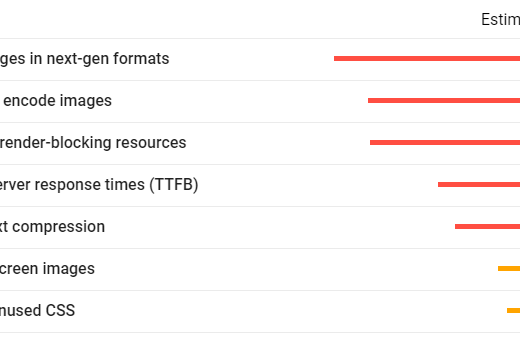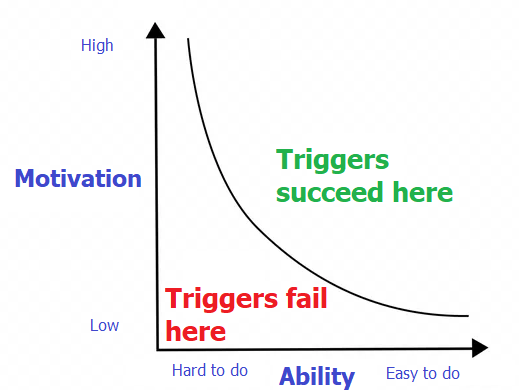Conversion rate optimization (CRO), UX and CTR optimization could be considered part of SEO now. SEOs are supposed to optimize websites to score well based on known ranking factors (Google uses 200+ of them but few of them are known to SEOs), but do search engines have any ranking factors related to CTR, CRO and UX? In the early days of search engines they did not use any user experience related ranking factors, but that has changed in the recent years, the ones that Google admitted using as ranking factors (with small impact or results) are:
- Website speed
- Secure websites
- Mobile fist index (they want to understand user experience with mobile phones especially above the fold area)
Let us remember also that Google bot has evolved a lot now, it can crawl, parse and render pages with better understanding of the layout (e.g. what content is above the fold, what is visible to users on the first load and what is not), understanding user experience on websites is becoming a high priority for Google especially in the mobile era where it is difficult to create a good user experience considering the limited screen space available for developers. The other looming question is whether Google going to use the user experience data available for them as ranking factors in the future if they are not already using them, Google owns :
- The most popular browser on the web (Chrome)
- The most popular email service (GMAIL)
- Cookies on almost every website on the web (Via Google Analytics, YouTube and more)
They can go beyond link profile and on-page SEO analysis to find quality websites, there are too many user experience signals available for Google now that they can use as ranking factors.
To make it clear here I am not asking you to be a UX expert, you just need to gain enough knowledge to cover the basics. There are four types of UX optimization that you can do and they have different level of difficulties and time requirements, I will walk you through all of them one by one and you can choose what to apply for each project depending on the needs and the available budget:
- Web design standards and convention of the web
- Experimental (using A-B tests and multivariate testing)
- Data driven
- User feedback driven
Web design standards and convention of the web
People visit 5-7 websites/day on average, most website follow very similar standards that become expected by most users when they visit a new website, some of them are:
- A logo on the left upper corner of the page that you can click on to take you to the home page
- Upper navigation menu in the header of the page, in most cases it has a contact us page
- A slider or a page wide image at the top is becoming popular in modern design
- A phone number placed in the header and the footer of the website and social media profiles linked from header or footer
- Websites should adapt to all device sizes (responsive design)
- A call to action is expected in the header area of the website (read more, get a quote etc)
- The message has to be loud and clear above the fold (marketing message, company vision, summary of the service)
By checking a website design against the conventions of web design you will be able to come up with few recommendations to improve user experience
Experimental A-B testing and multivariate testing
You can provide users with two different copies of the page (multivariate testing where the difference between the pages is not significant) using technologies like Google optimizer or even two significantly different pages (A-B testing), after you have enough data available you can find out the winning version (the one with less bounce rate and better conversion rate) and use it on the website.
Landing pages services like Unbounce and Instapage are offering similar services now
Please note that you need a significant amount of traffic and conversions in order for those tests to give you trusted results which is not available small websites with few conversions/week. For small websites you need to follow the conversion rate best practices (e.g. a prominent call to action) and convention on the web when doing CRO
Data driven:
Technology can provide us with many user behaviour signals without users even knowing that we are doing that (we still have to respect users privacy), few examples for that:
- Mouse movement tracking, you can use CrazyEgg, HotJar or a free service like HeatMap, once you have enough data you should be able to restructure the page to make it more effective for users
- GA (Google Analytics) a good starting point is analyzing pages with a high bounce rate, in most cases this is a signal that users are not finding what they are looking for quickly. Find the top keywords that drive traffic to those pages and make sure that users are getting their questions answered quickly without taking any extra actions like scrolling down or clicking on a tab or a button
- Landing pages with low conversion rate should be analyzed and re-optimized, low conversion rate could be a result of a poorly structured page, it could be also a signal of low trust due to lacking of social proof, adding partner and awards badges, clients or users testimonial could be helpful.
- Slow loading pages which could be found in GA present an opportunity for improvement. Reducing web page speed will have a positive impact on conversion rate
- Low CTR (click through rate) in SERP (search engine result page), this data is available in GSC (Google Search Console), when CTR is low it could be a signal that your content is not relevant enough for that search query or the text snippet that is used by search engines is not good enough, always make sure that title tags and description tags are enticing for users to click, if Google is picking the SERP snippets from another section in the page optimize that text to make more relevant for the target keyword and more attractive for users to click.
There are many other data sources where you can find user behavior signals that you can use to optimize your website for a better user experience and eventually better ranking with search engines
User feedback based:
Surveying website users asking them general questions what do they think about the website or what changes they like to see is a very effective usability improvement tactic, this could be done using services like 5 seconds testing or any other similar testing services where you upload a screen shot of a website and ask people see it for 5 seconds before answering few questions like:
- What services do this website offer?
- What phrases or words do you remember from the website?
- What do you think about the design of the website?
There many solutions to conduct a scurvy on a website depending on the CMS your are using, some solutions that rely on JavaScript embedded codes can work almost on any website, Getsitecontrol is an example for that.
Trust:
I tried my best not to tab into marketing while taking user experience and conversion rate but that is really difficult, you can create the best landing page on the web but it will still convert less than poorly designed landing page if it will not be trusted by users. Think about a bank like Royal Bank offering wealth management service and Joe the Financial adviser offering the same service, even with Joe having a very well optimized landing page and offer the same services for a lower price Royal Bank will have a better chance to convert, here are few tips to over come that:
- Be a brand, create a nice logo and user it consistently, design a professional website, pick clours and fonts for your brand and user them on all marketing material. Advertise on different channels especially community events.
- Use social proof signals like user testimonials, case studies, stats and award winning and mention badges (e.g. as seen as Toronto Star)
- Offer quick communication options like online chat
Finally even if search engines will not use more user experience signals as ranking factors in the future, providing a good user experience should be always a priority. User experience can even affect other areas of SEO like attracting link, do people link to websites where they had a bad user experience with? The answer is no.



No Comments